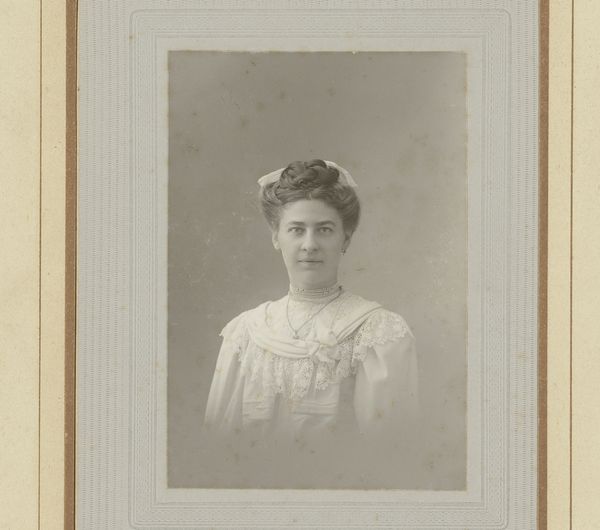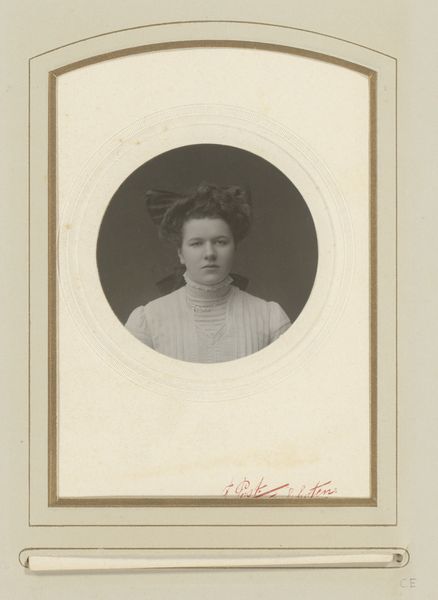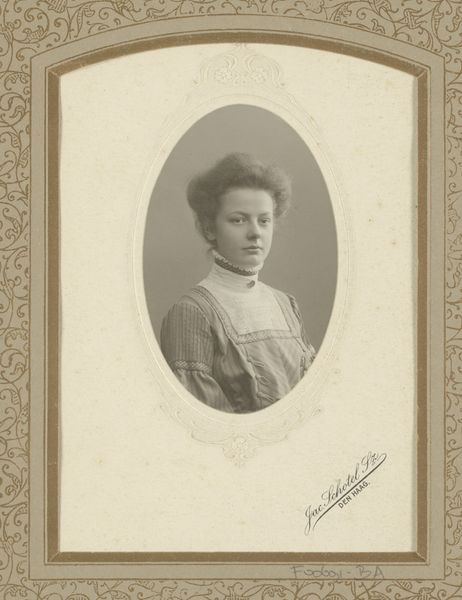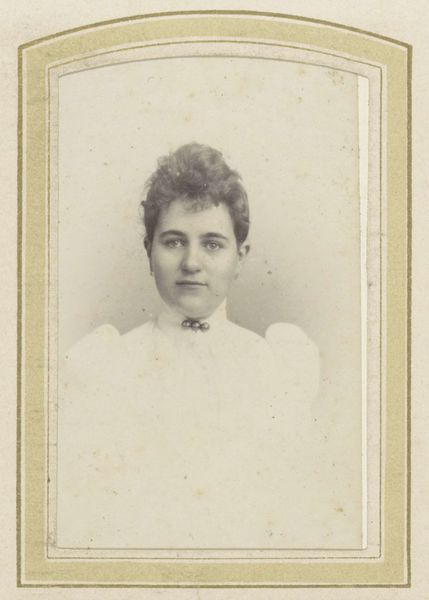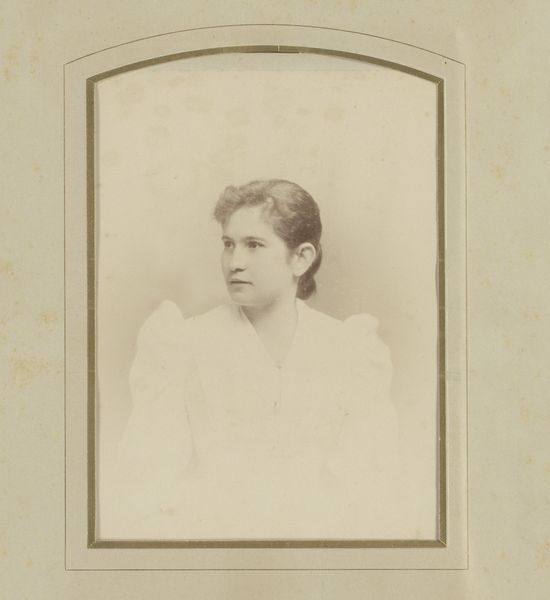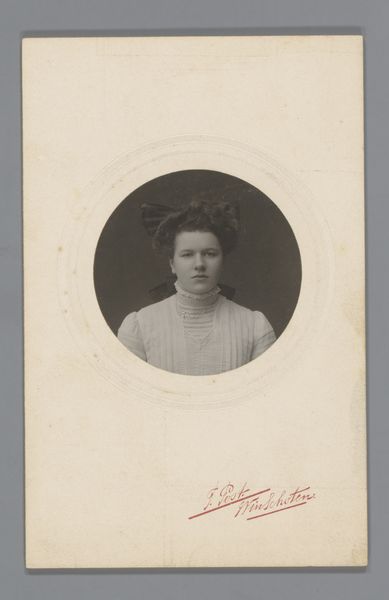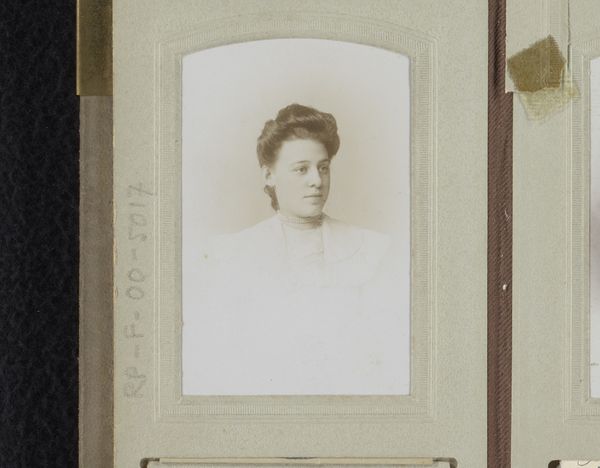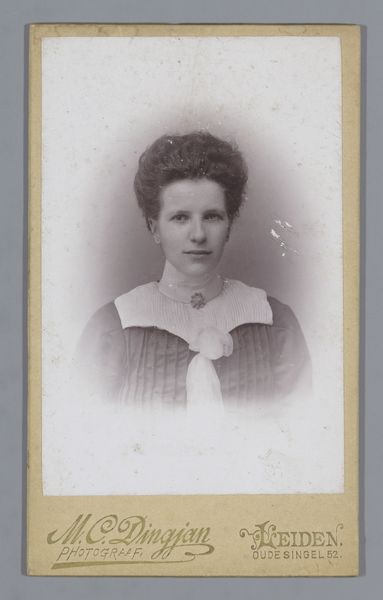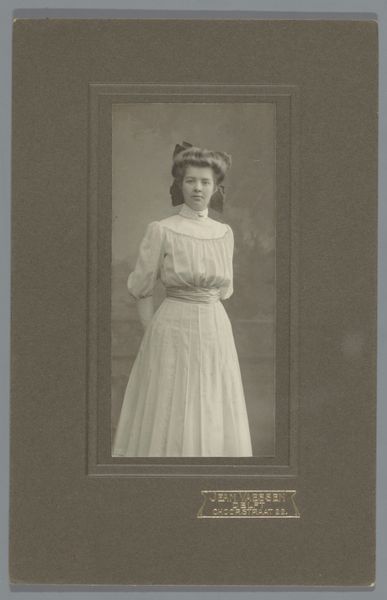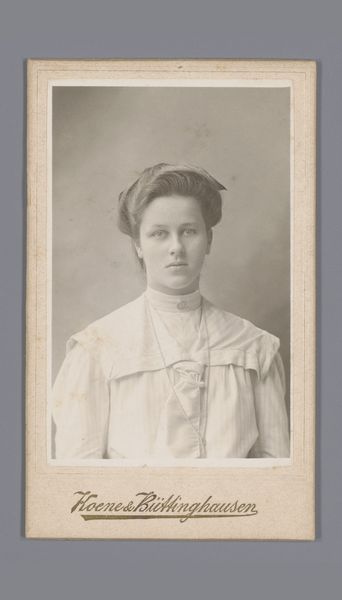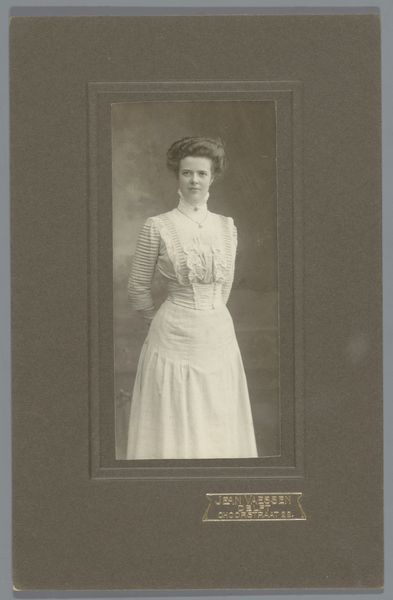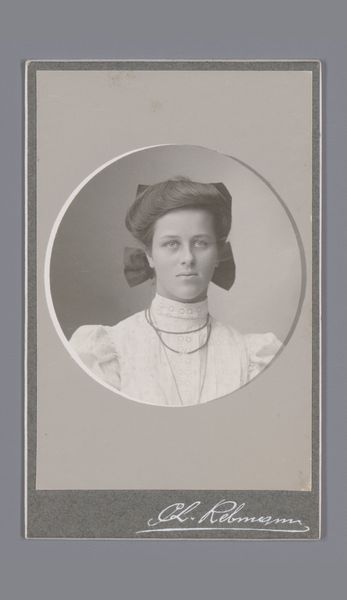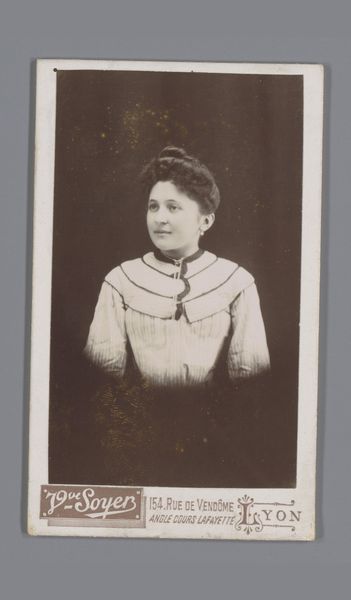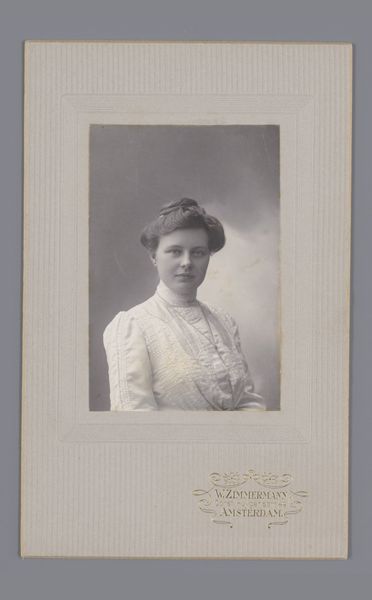
photography, gelatin-silver-print
#
portrait
#
aged paper
#
photography
#
framed image
#
gelatin-silver-print
#
academic-art
#
fine art portrait
Dimensions: height 136 mm, width 98 mm
Copyright: Rijks Museum: Open Domain
Curator: This is "Portrait of a Young Woman," a gelatin silver print created between 1897 and 1902 by Guillame Maximilien Zimmermann. It is part of the Rijksmuseum's collection. Editor: Immediately, I notice the strong contrast and the subdued emotion in her expression. The texture in the ruffled collar draws my eye. It feels quite formal, and the monochromatic palette lends it a timeless quality. Curator: The gelatin silver printing process, popular at the time, allowed for finer detail and a wider tonal range, which suited the emerging trends in portraiture—a market increasingly accessible to the rising middle class. The formal composition mirrors the conventions of academic art, reflecting the social expectations of the era and photography's need to assert itself as "high art" at the time. Editor: The use of light here is very calculated; notice how it highlights her face and collar but then falls away, creating a focused, almost theatrical effect. Semiotically, the frame itself acts as a border to protect and to make clear her subject matter. This is a constructed reality, presenting a carefully managed version of identity, not candid observation. Curator: Precisely. The portrait session itself would have been a carefully orchestrated performance. The sitter's clothing and demeanor were tools that aided the social production of identity within the constraints and expectations of the studio. Photography was democratizing access to portraiture while also imposing standardized representations of class and respectability. It’s the mechanization of status, isn’t it? Editor: It does seem so! But what endures is that engagement between the camera and subject and that controlled tonal scale. The sharp focus married with her averted gaze creates such a contained but still haunting representation. It's compelling in its austere visual language. Curator: Studying this portrait lets us contemplate the dynamic of access, representation, and aspiration in the late 19th century. Editor: For me, I can admire that balance of light and dark. Despite any possible external influences, she remains striking.
Comments
No comments
Be the first to comment and join the conversation on the ultimate creative platform.
